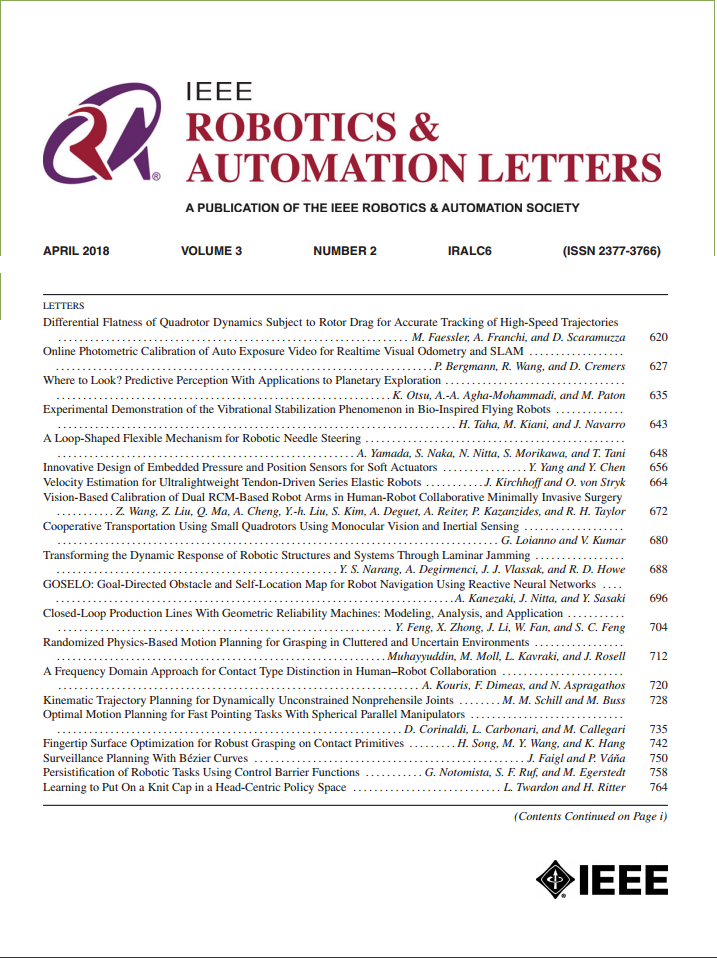Variable Stiffness Actuation via 3D-Printed Nonlinear Torsional Springs
IF 4.6
2区 计算机科学
Q2 ROBOTICS
引用次数: 0
Abstract
Variable Stiffness Actuators (VSAs) are promising for advanced robotic systems, offering benefits such as improved energy efficiency, impact safety, stiffness adaptability, mechanical robustness, and dynamic versatility. However, traditional designs often rely on complex mechanical assemblies to achieve nonlinear torque–deflection characteristics, increasing system intricacy and introducing potential points of failure. This letter presents the design, implementation, and validation of a novel antagonistic VSA that drastically simplifies complexity of the mechanisms by utilizing 3D-printed progressive nonlinear torsional springs (3DNS). By directly 3D-printing springs, we enable precise control over nonlinear behavior through strategic variation of their geometry. Empirical testing and finite element simulations demonstrate that our springs exhibit low hysteresis, low variance across samples, and a strong correlation between simulated and measured behavior. Integrating these springs into an antagonistic setup demonstrates the feasibility of achieving VSAs with low damping, minimal hysteresis, and stiffness that aligns well with modeled predictions. Our findings suggest that this approach offers a cost-effective and accessible solution for the development of high-performance VSAs.求助全文
约1分钟内获得全文
求助全文
来源期刊

IEEE Robotics and Automation Letters
Computer Science-Computer Science Applications
CiteScore
9.60
自引率
15.40%
发文量
1428
期刊介绍:
The scope of this journal is to publish peer-reviewed articles that provide a timely and concise account of innovative research ideas and application results, reporting significant theoretical findings and application case studies in areas of robotics and automation.
 求助内容:
求助内容: 应助结果提醒方式:
应助结果提醒方式:


